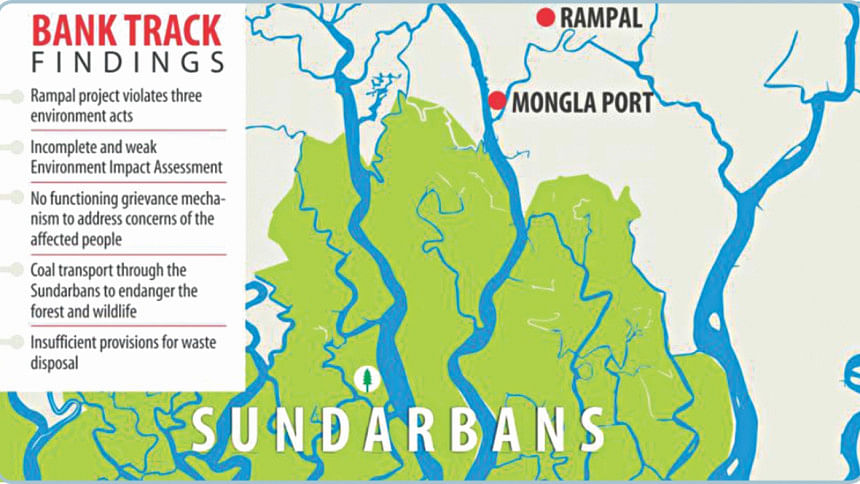RAMPAL PROJECT: Environment before development

The Rampal Power Plant is a proposed 1,320-megawatt coal-fired power plant promoted by the Bangladesh-India Friendship Power Company Limited (BIFPCL), a joint venture of the Bangladesh Power Development Board (BPDB) and India's largest power producer, NTPC Limited. The project is a result of a Bilateral Investment Treaty (BIT) between Bangladesh and India for the promotion and protection of investments.
International Investment Law and International Customary Law have provided some obligation under the BIT Agreement and it would be better to follow the obligation for both sides. The proposed 1,834-acre plant site is on the Passur River in the Ganges tidal floodplain in the southwest of Bangladesh. The site is 14 kilometers north of the Sundarban mangrove forest, a UNESCO World Heritage site. The Sundarban is a national conservation area in Bangladesh and a designated Ramsar Convention's wetlands and a part of the UNESCO World Network of Biosphere Reserves. The physiognomic features of the Sundarban have been substantially altered by human activities and the mangrove forests are being destroyed due to commercial activities and human-induced climate change.
The present analysis focuses on an array of international instruments relating to the protection of species, habitants, ecosystems, biodiversity lato sensu on the operations of foreign investors. The law relating to the protection of biological and cultural diversity, the obligations may potentially conflict with investment disciplines. Several environmental agreements provide for the protection of areas like, the establishment of natural reserves or other protected areas and species. Pursuant to Article 4(1) of the Ramsar Convention, the States shall promote the conservation of wetlands and waterfolw by establishing nature reserves on wetlands, whether they are included in the list or not, and provide adequately for their wardening. Similar obligations arise from Article 4 of the World Heritage Convention, Article 2(1) of the Convention on Migratory Species and Article 8(a)(b) of the Convention on Biological Diversity.
The potential incidence of this type of obligations on foreign investment schemes must be appraised in the light of the more specific regulations issued by the bodies responsible for the management of these treaties to implement such obligation. Such obligations focus inter alia on the contents of the management plans that the States are required to submit, the legal status must be granted to the relevant area to qualify for recognition by an international body, the buffer zone that must be established in the surroundings of the protected area or requirements in terms of environmental impact assessment and monitoring attached to the creation of such protected areas. An early example of how protection of cultural heritage may collide with investment schemes is provided by the SPP v Egypt case also known as the Pyramids case. A foreign investor planned to build a tourist resorts near pyramids, for which it had received the initial approval of Egypt, most notably through an investment agreement concluded.
The International Court of Justice (ICJ) analysed the impact of the World Heritage Convention as a potential justification for the acts of Egypt. Specially, The tribunal concluded that the effect of Article 4, 5(d) and 11 was to create an obligation that had become binding not on date of entry into force of the Convention (1975) but only on the date which the World Heritage Committee accepted the nomination.
F. Francioni and F. Lenzerini in a book titled The Destruction of the Buddhas of Bamiyan and International Law articulated that the States have an obligation to protect natural and cultural heritage irrespective of whether a particular site is listed or not. So Bangladesh is a signatory party and has accepted the World Heritage Convention for the reason host country Bangladesh and investor India has an obligation to protect Sundarban and take steps ensure biodiversity. Bangladesh is an observer State to the Energy Charter Conference and according to Article 19 of this Charter 'each contracting party strive to minimize, in an economic efficient manner, harmful environmental impacts resulting from all operations within the energy cycle in its area'.
Bangladesh should ensure the participation of civil society and establish adequate means to monitor and enforce the environmental commitments under taken by the investor. Under international law, the investor requires (a) to establish environmental management plans, (b) to meet certain environmental motoring obligations regarding water and wildlife, (c) to submit detailed compliance report, and (d) to post security bond of several million dollars to back compliance. Bangladesh and India cannot deny the international law obligation while undertaking Rampal Project.
The writer is an LLM student at South Asian University, New Delhi.

 For all latest news, follow The Daily Star's Google News channel.
For all latest news, follow The Daily Star's Google News channel. 








Comments